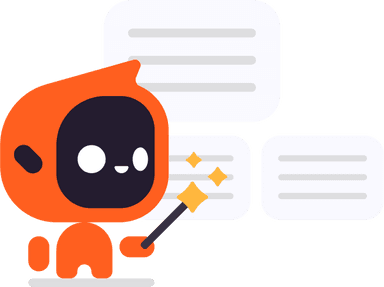The Importance of Spanish Literature in Cultural Understanding
Concept Map
Mastering Spanish reading comprehension is key to unlocking the cultural and historical richness of Spain and Latin America. This involves a systematic approach to learning the language's syntax and vocabulary, overcoming challenges like verb conjugations, and employing diverse techniques such as skimming, scanning, and paragraph analysis. Integrating Spanish journalism and periodicals into daily habits, along with selecting appropriate reading materials, enhances language proficiency and cultural insight.
Summary
Outline
The Role of Spanish Literature in Cultural Insight
Delving into Spanish literature is essential for gaining a comprehensive understanding of the cultural nuances and historical context of Spain and Latin America. Reading in Spanish allows individuals to connect with the collective consciousness of Hispanic societies, exploring a rich tapestry of literary works that reflect the region's diverse traditions and values. Mastery of Spanish reading not only broadens one's linguistic competence but also fosters a profound respect for the literary contributions that have shaped the Hispanic world.Essential Strategies for Spanish Reading Comprehension
Achieving proficiency in Spanish reading comprehension requires a systematic approach to understanding the language's syntax and vocabulary. Foundational literacy skills are critical for enhancing reading fluency and comprehension. Effective comprehension strategies include building a robust vocabulary, engaging in consistent reading practice, grasping grammatical nuances, and utilizing contextual clues to interpret meaning. Beginners should start with age-appropriate literature and leverage digital resources that provide graded Spanish reading materials.Addressing Challenges in Spanish Reading Proficiency
Spanish learners often encounter obstacles such as distinct pronunciation rules, intricate sentence constructions, idiomatic expressions, and extensive verb conjugations. The language's verb conjugation system, in particular, requires understanding variations according to person, number, tense, aspect, and mood. Overcoming these challenges involves immersive language experiences, using educational technology, practicing reading aloud, and maintaining a Spanish journal to reinforce new linguistic concepts.Diverse Techniques for Enhancing Spanish Reading Skills
A multifaceted approach to Spanish reading practice can significantly improve comprehension and retention. Techniques such as skimming for the gist and scanning for specific details are beneficial for different reading objectives. Additional methods include setting clear reading goals, summarizing texts, annotating for deeper understanding, and consulting reference materials for unfamiliar words. Exposure to a wide array of Spanish literature, including various genres and styles, is vital for encountering diverse vocabulary and syntax.Paragraph Analysis for Spanish Language Development
Concentrating on paragraph-level reading is an effective strategy for enhancing comprehension and vocabulary acquisition. By dissecting paragraphs from a range of texts, learners can discern the tone, context, and thematic vocabulary. Practical paragraph analysis techniques involve identifying the central theme, annotating for clarity, translating pivotal sentences, and using paragraphs as stimuli for writing and speaking exercises to solidify language skills.Integrating Spanish Journalism into Daily Reading Habits
Incorporating Spanish journalistic articles into one's reading routine offers a window into the current linguistic and cultural landscape of Spanish-speaking communities. These articles provide exposure to modern vocabulary and viewpoints on societal issues. To maximize the benefits of reading Spanish journalism, learners should utilize digital tools for vocabulary assistance, select articles aligned with their interests, and engage in community discussions to deepen their understanding. Access to a variety of online Spanish news sources makes it easier to incorporate these texts into daily study.Selecting Suitable Spanish Reading Materials
The selection of Spanish reading materials should be tailored to the reader's language proficiency, interests, and cultural engagement. A well-chosen Spanish reader may include additional learning aids such as glossaries and audio recordings. For novices, resources like "Paco Ardit's Spanish Short Stories for Beginners" provide an accessible entry point with simplified language and comprehension questions. Intermediate learners can progress with "Español con Juan: Aprende leyendo historias reales," which blends real-life narratives with cultural insights. Advanced students may challenge themselves with literary classics such as "El Principito" by Antoine de Saint-Exupéry, which offers a rich lexicon and complex philosophical themes.Enhancing Language Skills through Spanish Periodicals
Regular engagement with Spanish periodicals is an effective way to immerse oneself in the language and gain a deeper understanding of Hispanic cultures. The internet grants access to a vast array of articles catering to all proficiency levels and interests. Reading periodicals not only bolsters grammar and syntax knowledge but also enriches vocabulary through contextual exposure to new words and phrases. Vocabulary enhancement strategies include highlighting unfamiliar terms, creating flashcards, summarizing articles with newly learned words, and exploring related multimedia content. Analyzing linguistic structures within these articles further deepens one's insight into the perspectives and thought processes of Spanish-speaking societies.Show More
Benefits of Reading in Spanish
Connection to Hispanic Societies
Reading in Spanish allows individuals to connect with the collective consciousness of Hispanic societies
Broadening Linguistic Competence
Mastery of Spanish Reading
Mastery of Spanish reading not only broadens one's linguistic competence but also fosters a profound respect for the literary contributions that have shaped the Hispanic world
Enhancing Reading Fluency and Comprehension
Foundational literacy skills are critical for enhancing reading fluency and comprehension
Strategies for Improving Spanish Reading Comprehension
Building Vocabulary
Effective comprehension strategies include building a robust vocabulary
Consistent Reading Practice
Engaging in consistent reading practice is essential for improving Spanish reading comprehension
Understanding Grammatical Nuances
Grasping grammatical nuances is crucial for achieving proficiency in Spanish reading comprehension
Challenges in Learning Spanish Reading
Pronunciation and Sentence Construction
Spanish learners often encounter obstacles such as distinct pronunciation rules and intricate sentence constructions
Verb Conjugation System
The language's verb conjugation system requires understanding variations according to person, number, tense, aspect, and mood
Overcoming Challenges
Overcoming these challenges involves immersive language experiences and utilizing educational technology
Effective Strategies for Spanish Reading Practice
Skimming and Scanning Techniques
Techniques such as skimming for the gist and scanning for specific details are beneficial for different reading objectives
Setting Clear Reading Goals
Setting clear reading goals is essential for effective Spanish reading practice
Exposure to Diverse Spanish Literature
Exposure to a wide array of Spanish literature is vital for encountering diverse vocabulary and syntax





